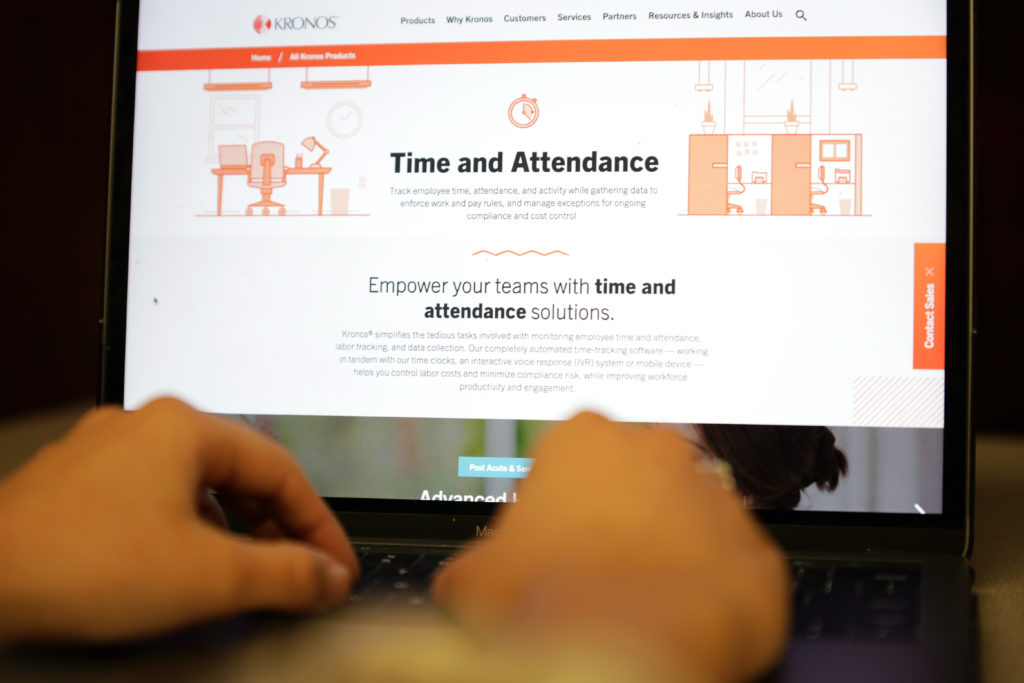Updated: April 15, 2019 at 3:15 p.m.
New time-off policies that expand vacation time for employees and standardize an online paid leave platform could help address complaints about a lack of staff appreciation, experts said.
Officials announced a slate of changes to paid leave policies last week, allowing employees to carry over some paid time off from one fiscal year to the next, earn more paid leave days based on the number of years they have worked at GW and track their time off more easily. Officials said the new policies, which will be enacted this summer, will allow employees to rest and be more productive when they return to work.
Jennifer Lopez, the associate vice president of total rewards, said the information technology, benefits, human resources and payroll divisions changed the paid leave policy to help employees more easily manage and use time off.
“Serving and supporting GW faculty and staff is paramount to our culture transformation,” she said in an email. “One pillar of this transformation includes doing business better with better tools in order to optimize the management of our human resources.”
Lopez said taking time off helps employees “recharge” and focus on their health. Officials hope employees who take a day away from work will be more energetic and effective when they return to their job, she said.
Administrators will host three town halls to field questions about the new policies and release a guide on the changes later this spring to ensure employees understand the amended paid leave policies and encourage employees to take time off, Lopez said.
“We hope that when our employees invest in themselves, it will bring them renewed focus and creativity to their career here at GW,” she said. “The new system and guide simply provide resources in support of employees using time available to them.”
Lopez said officials received feedback from several “stakeholder groups” about simplifying tracking time off. Employees are currently required to receive departmental approval to carry over vacation time and use different systems for managing time off depending on their division.
Officials also evaluated peer schools’ policies as benchmarks for the changes, she said. At least five of GW’s 12 peer institutions, including the University of Southern California and Tufts University, have similar policies that allow employees to carry over vacation time.
Lopez said that because some employees already use Kronos, a system for tracking leave, officials decided to expand the system’s use for all workers. Officials will ask employees and managers for input as they roll out the new measures and will again solicit feedback a year after the policy’s implementation to make improvements, she said.
“Any time we roll out a new system, we understand that there will be some adjustments that will need to be made as employees fully utilize the new system,” Lopez said.
Human resources experts said the changes could improve employee satisfaction and illustrate the University’s appreciation for staff. The results of a University-wide institutional culture survey last fall showed the staff and faculty felt like their contributions went unrecognized.
Craig Schilling, a professor of educational leadership at Concordia University Chicago, said the decision to allow staff to carry over paid vacation time is “generous” and allows faculty and staff to spend more time with family. Staff can use up to five unused vacation days by Aug. 31 of the new fiscal year, which begins on July 1.
He said limiting the carry-over period to two months prevents staff from misusing the system by stockpiling vacation days and skipping rest time.
Schilling added that the changes may help boost staff morale temporarily, but transforming the University’s institutional culture will require more time and feedback.
“It’s a long-term project, not a short-term project,” he said. “Things may not be perfect, but if they are really dedicated to doing this – it’s about everybody from the top down owning it.”
Connie Wanberg, a professor of management at the University of Minnesota, said a benefits update reassures employees that administrators are listening to their concerns about a disconnect between top officials and lower-level faculty or staff.
“A lot of time, employees take surveys, and then they never see action or circle-back in terms of what they said,” Wanberg said. “Just having more attention to different issues that they face is a big positive.”
Dan Tomal, a distinguished professor of educational leadership at Concordia University Chicago, said changes in national demographics in recent years have forced employers to focus on competitive paid leave policies. He said more families now have two working parents – rather than a sole breadwinner – than in years past, which necessitates more flexibility for vacation time and child care.
About 62 percent of families with children had two working parents in 2018, according to statistics from the Department of Labor.
Tomal added that standardizing the time-off tracker ensures that scheduling decisions will be fair and impartial. Using inconsistent tracking systems could make employees concerned that differences in their schedules stemmed from bias, he said.
“It’s best that an organization can be consistent and try to treat everyone the same,” he said.
This post was updated to reflect the following correction:
A previous version of this post incorrectly identified Connie Wanberg as a professor at the University of Michigan. She is a professor at the University of Minnesota. We regret this error.




